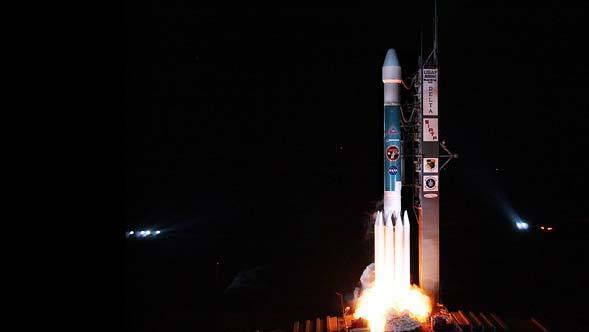
News Release • August 25th, 2006 • feature06-26 •
Written by Linda Vu
Spitzer Science Center
In three terrific years, NASA's Spitzer Space Telescope has peered into the heart of our Milky Way galaxy, detected partial ingredients for DNA in other solar systems, and uncovered evidence that planets might rise from a dead star's ashes.
With almost 18,000 hours of completed observations, the four-meter tall observatory is also the current record holder for the longest-lived infrared mission ever launched into space, surpassing its predecessor the European Space Agency's Infrared Space Observatory mission, which flew for three years from November 1995 until December 1998.
"Spitzer's scientific success far exceeds even my wildest pre-launch expectations," said Spitzer Project Scientist, Dr. Michael Werner.
This past April, NASA officially declared Spitzer a "successful mission" when it completed the last of its minimum mission requirements, which stated that the telescope must fly for at least two and a half years. However, like an overachiever, Werner expects Spitzer to conduct invaluable observations of the infrared universe through 2008 and beyond.
"We can look forward to almost three more years of discovery and exploration of the Infrared Universe with Spitzer's full capabilities, and several additional years at the shortest infrared wavelengths where the cryogenic cooling is not required," said Werner.



